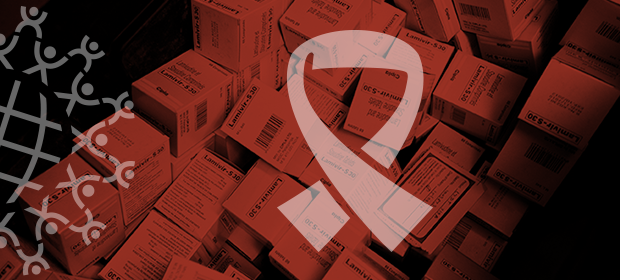Where We Work
See our interactive map


The next 15 years are going to make global health history. They should mark the end of the most damaging epidemic in our lifetime: AIDS.
As a global community, we’ve committed to ending AIDS as a global health threat by 2030. It won't be easy.
Every step of the way, we’ll need doctors, nurses, and other health workers to help make it happen.
But the Sustainable Development Goals and the UNAIDS Fast-Track approach outline just how we’ll do it. Focusing on the populations and communities most affected by HIV and making national and international commitments will be crucial.
And every step of the way, we’ll need doctors, nurses, and many other health workers to help make it happen, one health care interaction at a time.From frontline health workers to moms and dads desperate to protect their families, AIDS has been changing life stories for over 30 years. Now we're changing the story of AIDS. So in honor of World AIDS Day and the 15 years of work ahead, here are 15 of those stories you shouldn’t miss:
Unfinished Business: Tracking Global Commitments on AIDS, Volume 4 (From ONE) ONE’s new report highlights the work yet to be done in the fight against AIDS. We’re starting to see dangerous levels of complacency, authors say, and it could undo the real progress we’ve made.
Rise in H.I.V. Among China’s Youth Draws Attention for World AIDS Day (From the New York Times)Health officials and researchers are raising alarms over an increase in new infections among high school and college students in China. Most are young men who have had unprotected sex with other men.
In Kenya, One Mother's Struggle for an HIV-Free Family (From VITAL)The right training can help health workers all over the world reach mothers like Ruby, who was in denial for years after she was diagnosed with HIV. That means fewer babies born with the virus.
WHO Urges Expansion of Antiretroviral Therapy to All People Living with HIV (From WHO)Reducing the number of new infections by 75% and doubling the number of people on ART by 2020 are the first milestones we’ll have to reach to end the epidemic, according to the World Health Organization.
Health Workers Count for HIV—and for Family Planning (From Picture It) Agnes runs an HIV clinic in Uganda. She’s a strong believer that anyone who comes in for HIV care should also get the family planning information and services they need.
World AIDS Day 2015: On the Fast-Track to End AIDS (From the Global Social Service Workforce Alliance) To achieve an AIDS-free generation, we must focus on protecting and caring for children, too many of whom are still affected by the virus.
UNAIDS Report: 15.8 Million on Treatment; Infections, Deaths Continue to Drop from Peak in Early 2000s (From Science Speaks) The number of people receiving life-saving HIV treatment has doubled every five years since the peak of the epidemic in 2000, according to UNAIDS. Doubling that number one more time will break the epidemic.
For HIV Counselors in Zambia, Work Hits Close to Home (From Science Speaks and VITAL) Albert and Philip search the local churches, bars, schools, and markets, offering help to those who are at risk but often out of reach.
New Optimism in the Hunt for an AIDS Vaccine (From Humanosphere) Humanosphere talks with Larry Corey, virologist and founder of the world’s largest international scientific initiative aimed at finding an effective vaccine against HIV: the HIV Vaccine Trials Network.
A Stronger Health Workforce to Address HIV in Nigeria (From IntraHealth International) About 3.2 million people live with HIV in Nigeria and AIDS has left roughly 1.6 million of the country’s children orphaned. The health workforce can help change that.
In Tanzania, Medical Circumcision Services Rely on a Predominantly Female Nursing Workforce (From Science Speaks and VITAL) One woman talks about the ups and downs of providing this HIV risk-reducing service to men who aren’t always comfortable receiving care from female health workers.
5 Ways to End AIDS by 2030 (From Devex)Today experts can see what once seemed impossible—ending the epidemic—is finally within reach, and these five focus areas are going to help make it happen.
Young People Need HIV Care and Services, Too (From VITAL) When it comes to HIV care, adolescents are often left behind. But a team at Shanamutango Clinic is working to change that for Namibia's young people.
From Cholera to Scholarship: How a Turkana Boy Became a Nurse (From VITAL) Emmanuel Etabo, a nurse in Kenya, works to save lives where life is tough.
Health Workforce Shortage Weakens AIDS Response (From Science Speaks) Africa needs over a million more health workers for HIV care.
Want to help end the AIDS epidemic? Investing in health workers is one of the most cost-effective and sustainable ways to improve health and save lives. Make a donation to IntraHealth International today.
Get the latest updates from the blog and eNews




